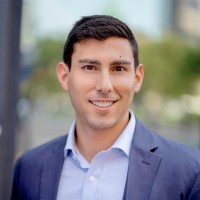Practical Solutions to Address Social Determinants of Health for Underserved Populations
We talk about social determinants of health (SDoH) in five general categories: housing insecurity, transportation issues, food deserts, language barriers and stigma. In reality, SDoH are more than that — they’re real-life experiences. They’re the mother who skips her own meals so her kids can eat. The rural resident with no providers for miles. The person who can’t miss work for therapy, or the one who won’t ask for help because they’re afraid of being judged. When we ignore them, we risk denying people care altogether. That’s why addressing SDoH is foundational to improving behavioral health access.
In a recent webinar, Lucet General Counsel Carlos Lindo and EAP Director of Operations April Craft discussed these SDoH barriers to behavioral health care and examined how robust networks, technology and Employee Assistance Programs (EAPs) can help in identifying and closing the gaps.
For Lindo, improving access to care is personal. His grandfather, a Cuban immigrant, spent the last phase of his life navigating a complex health care system that didn’t speak his language. Because of that, “there were behavioral diagnoses that were missed because he could not communicate properly with the medical staff… treatment that could have continued his life or made the transition easier,” he said.
To successfully tackle SDoH, Lindo explained, we must first identify disparities, then use that data to measure and close gaps. For example, data can help identify issues such as:
- Do we have enough Spanish-speaking providers?
- Are appointments accessible and timely?
- Are we seeing who is (and who isn’t) using their EAP benefits?

“We want to use the language that members feel most comfortable sharing their thoughts and feelings.”
April Craft – Director of EAP Operations
Lindo explained that it’s no longer enough to have a network. We need responsive networks, with real-time data on provider availability, utilization, cultural fit and outcomes. We also need to evolve services, incorporating more flexible options like virtual sessions, culturally informed care and integrated support — all of which can make a difference.
Lindo and Craft agreed about the importance of matching clients with the right provider, noting that language, culture and lived experience all impact the connection. “We want to use the language that members feel most comfortable sharing their thoughts and feelings,” Craft said.
Technology plays a big part in improving access, with digital tools like Lucet’s Navigate & Connect helping identify early behavioral health needs, guide members to care and connect them to providers in real time. Craft noted that EAPs are another powerful and underutilized tool that can break down these barriers.
For example, EAPs can help remove the financial obstacles that prevent many people from receiving behavioral health care. “Many EAP programs provide no-cost counseling benefits, and we know that cost can be a significant factor in why someone may delay or never get care,” Craft explained.
Craft addressed the common misconception that EAPs are just about counseling. She noted that they can also provide legal and financial support when people are facing issues like evictions, debt or taxes. Services like Lucet’s WorkLife can provide customized consultations, research potential options and vet resources, and empower people to access help they didn’t even know existed. Craft gave an example of one caller to Lucet who was overwhelmed because she needed to move but couldn’t afford her security deposit. The Lucet WorkLife team was able to find a community program that paid for her.
Unfortunately, people aren’t always aware that these resources are available. “They may not know that there are advocates out there for children who need additional help in school,” she said, or that food banks don’t always require proof of income. Lucet’s WorkLife team goes beyond just sharing resources — they prepare people for how to access them and what to expect. That includes help with subsidized summer camps, utilities, rental assistance, transportation, discounted medication and more.
EAPs can also support emotional needs, such as helping someone feel less alone during a life change, or with crisis support. “Some people think the ER is the only place to go in a crisis,” Craft said, but an EAP clinician can assess, support and redirect someone to the right care, sometimes preventing unnecessary ER visits. Like all EAP services, it’s completely confidential.

“Let’s use the data and find the gaps. It’s the identification of these disparities that’s really going to help address the treatment for members and for your employees and students.”
Carlos Lindo – General Counsel
In their closing remarks, Lindo and Craft reiterated the importance of tracking data and integrating those insights to improve care and access. Together they urged their audience to use reports to see what’s working, where inequities exist, and where communication is lacking. Craft reminded attendees to review their EAP offerings regularly — virtual options, coverage for dependents, low-barrier access — and to talk about these benefits often. As Lindo said, “Let’s use the data and find the gaps. It’s the identification of these disparities that’s really going to help address the treatment for members and for your employees and students.”
Britta Nordstrom, MBA is a senior marketing specialist at Lucet.


